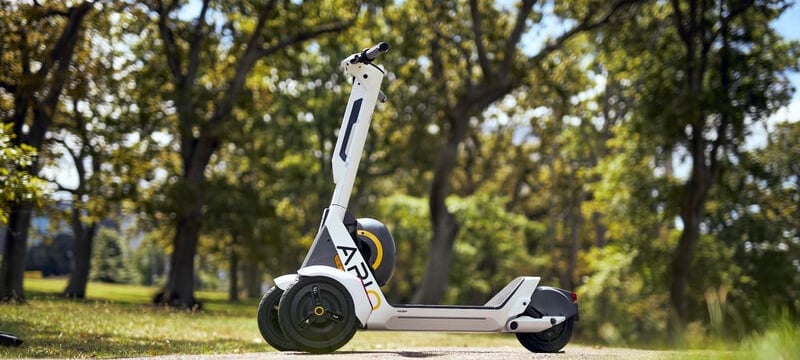Ario's 3-Wheel Scooters: A Game-Changer for Auckland's Micromobility Scene
Ario's three-wheeled e-scooters are set to revolutionize Auckland's micromobility scene with their enhanced stability and safety features. These innovative vehicles could potentially prompt a revisit of the city's ban on Segway scooters, as their wider stance and advanced technology address the previous concerns.
7/9/20242 min read


Ario’s 3-Wheel Scooters: A Game-Changer for Auckland’s Micromobility Scene
Auckland is abuzz with the launch of Ario, a global rideshare company that has introduced its cutting-edge three-wheeled e-scooters to the city's streets. These innovative scooters are set to revolutionize the micromobility landscape, and there are speculations that their wider stance could prompt the council to reconsider the ban on Segway scooters. But is there more to this story than meets the eye?
Ario: Pushing the Boundaries of Micromobility
Ario's three-wheeled e-scooters are designed with stability and safety in mind. Their wider base, akin to the Segway personal transporters that were once ubiquitous, promises a more balanced riding experience. This design feature is particularly significant in light of the ongoing concerns surrounding the safety of traditional two-wheeled e-scooters.
But why is Ario using three-wheelers? Some say it's just a brilliant marketing move to outdo competitors, but others smell something fishy. Could it be that Ario's design is a direct response to the need to self drive?
The Segway Saga: A Revisit?
In the early 2000s, Segway self-balancing scooters gained popularity as a novel mode of urban transportation. However, their widespread adoption was hampered by concerns over safety and potential conflicts with pedestrians, leading to bans in many cities, including Auckland. Ario's three-wheeled scooters, with their wider stance and enhanced stability, could reignite the debate around these regulations.
But let's not forget, Segway was touted as the future of urban transport, only to become a relic of overhyped technology. Are we witnessing history repeating itself with Ario? Is this just another flash in the pan, or does Ario genuinely offer a safer and more practical solution? What if the Segway had been allowed to fulfil its potential?
A Call for Regulatory Reassessment
As Ario's scooters hit the streets of Auckland, there is speculation that the council may need to reevaluate its stance on the Segway ban. With a design that prioritizes stability and safety, these three-wheeled scooters could potentially alleviate the concerns that led to the initial ban. Additionally, their advanced technology, including remote-piloting capabilities, further enhances their safety profile.
Yet, some skeptics argue that this push for regulatory change is more about corporate interests than public safety. Are we seeing a genuine shift towards safer micromobility, or are we being sold a carefully packaged narrative to benefit big business?
The Future of Micromobility in Auckland
The introduction of Ario's three-wheeled scooters marks a significant milestone in Auckland's micromobility landscape. As the city grapples with congestion and environmental concerns, these innovative vehicles could offer a sustainable and practical solution for urban transportation. However, their success will hinge on the council's willingness to adapt regulations to accommodate this new technology.
But let's keep our eyes peeled and our questions sharp. Who really benefits from this new wave of micromobility? Are we on the brink of a transportation revolution, or are we being led down a garden path by slick marketing and corporate interests? Only time will tell, but one thing is for sure: Ario's three-wheeled scooters have stirred the pot, and we're here to see what comes to the surface.
